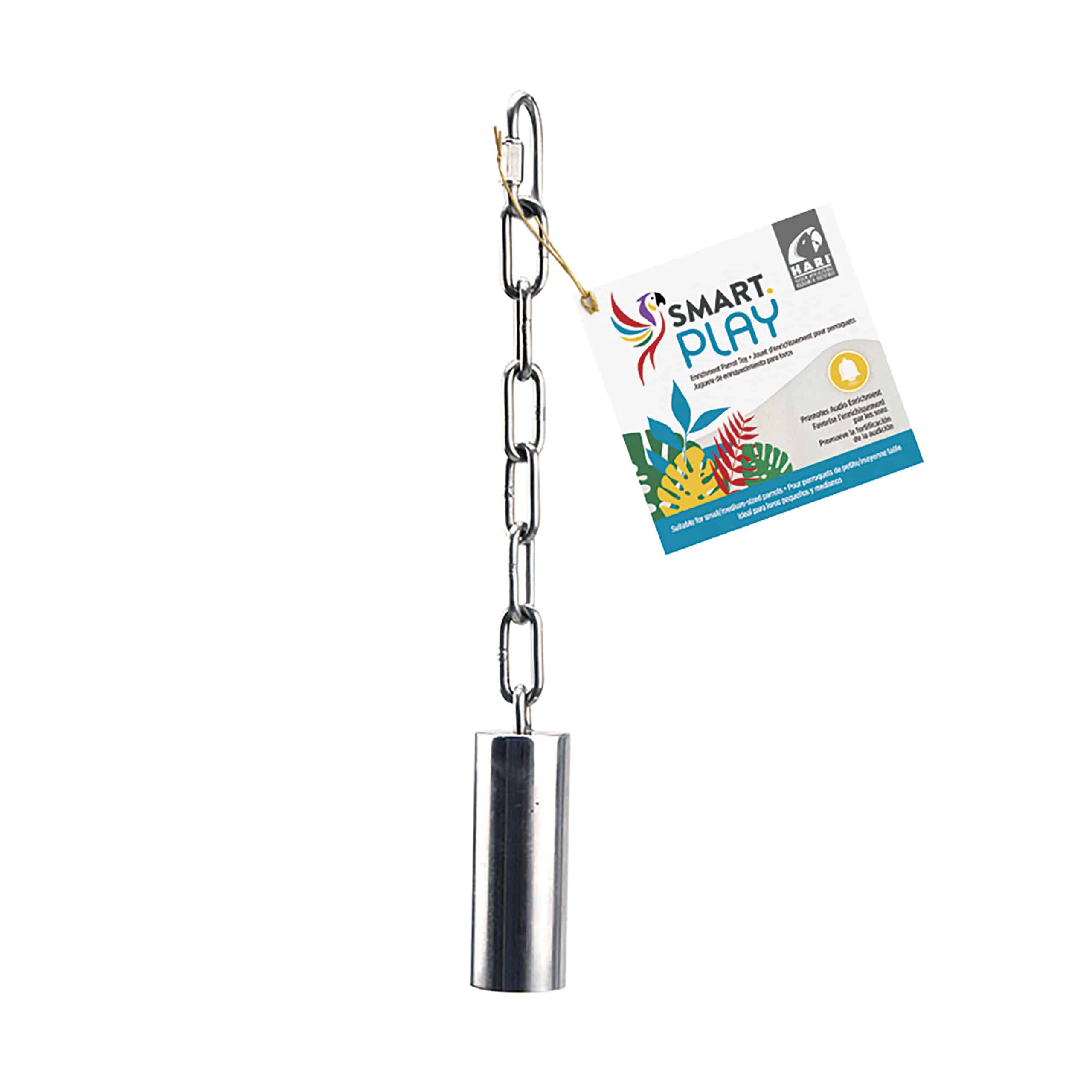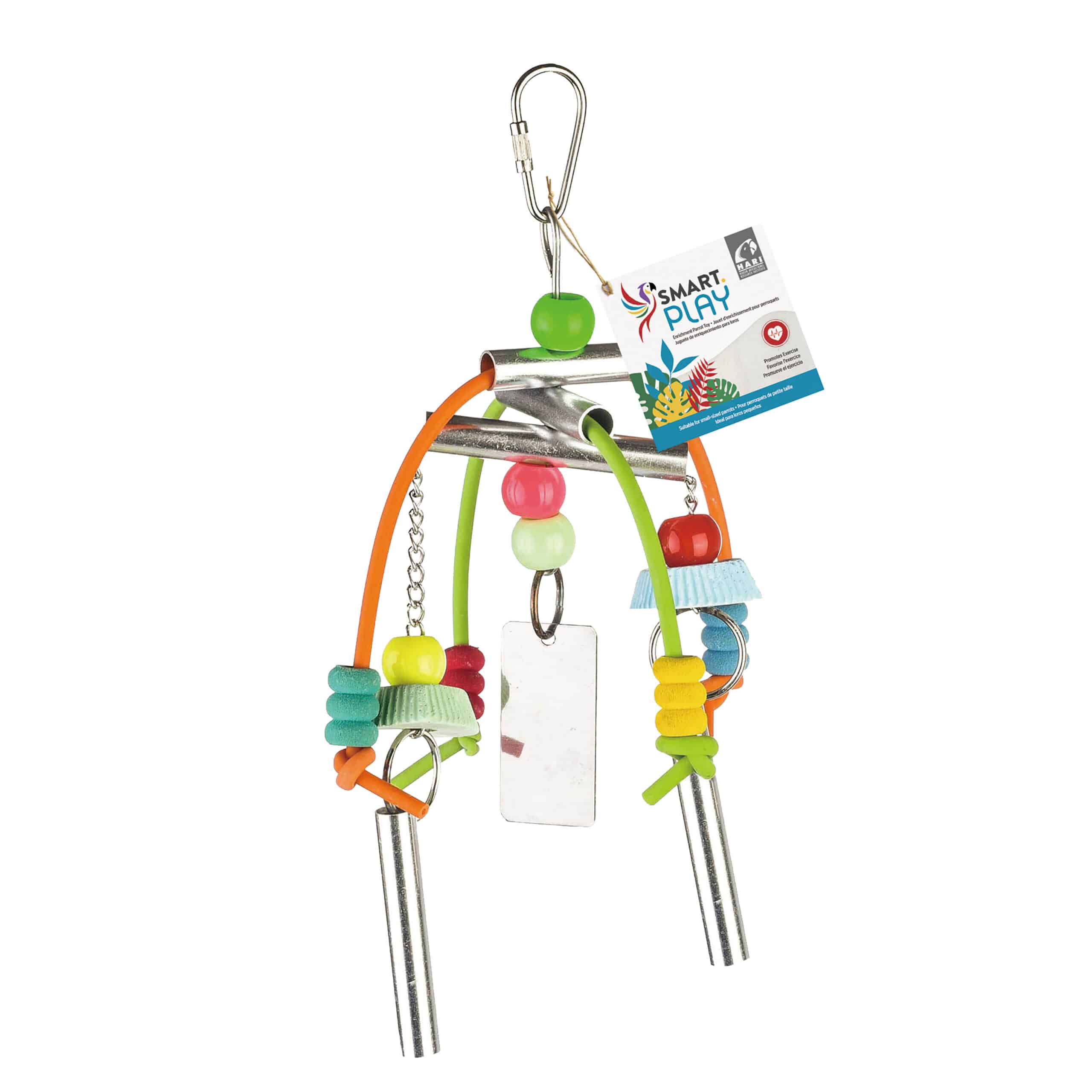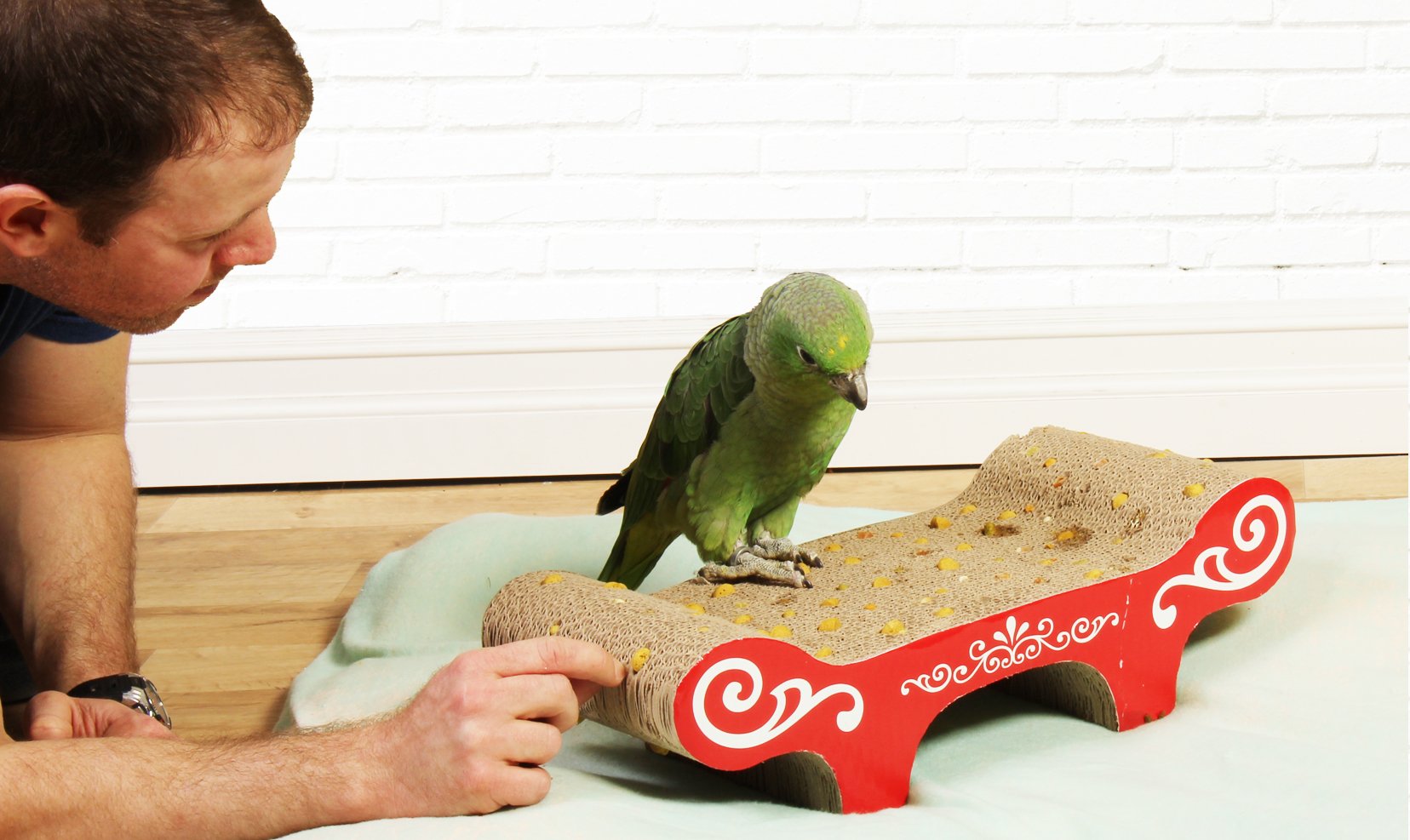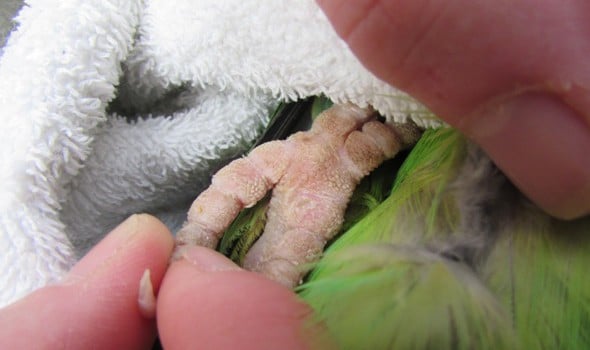Your cart is currently empty!
Available Products
Keep Learning
Choosing the Right Foot & Audio Toys for Your Parrot
When it comes to choosing the right foot and audio toys for your feathered friend, there are several important factors that you should consider.
Here’s a list of tips to help you pick the perfect toys for your parrot:
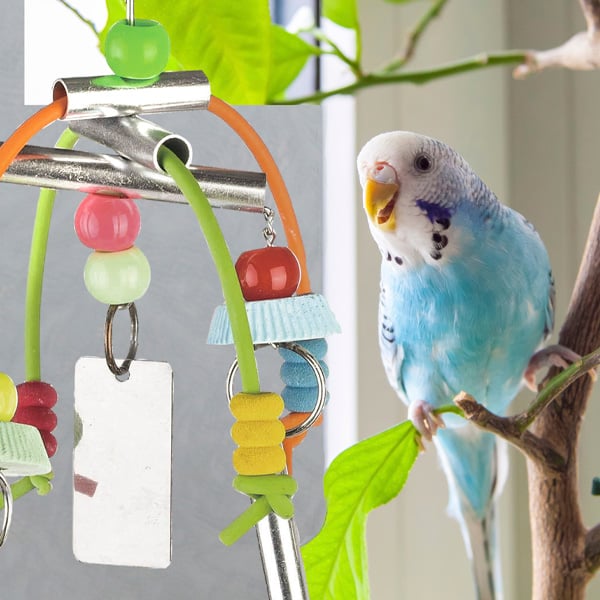
- Ensure that the toys are made from bird-safe materials and designs.
- Consider your parrot’s size when selecting appropriate toys, including foot toys. The design, size, texture, material, and weight of the toy should all be taken into account.
- Be mindful of your parrot’s species and size to avoid them swallowing or breaking off small toy parts.
- Avoid cowbell-style bells and jingle bells, as well as any bell made of toxic metals for birds.
- Avoid small bells with larger birds as they can trap a toe or beak in the slit. Instead, use stainless steel bird-safe bells.
- Choose age and skill-appropriate toys, particularly for younger birds. Start with lighter weight toys.
- Consider using small disposable foot toys that can be used for hiding non-perishable food, offering a foraging opportunity.
- Get creative and recycle materials from salvageable toys to make new ones.
- Select designs and materials that can stimulate preening activities, like pacifiers or toothbrushes.
HARI Smart.Play Foot and Audio Toys
Foot toys are an essential part of a parrot’s toy collection, and they serve several crucial purposes for their physical and mental well-being. Parrots use their feet to climb, perch, hold food, preen, and explore their environment. Foot toys provide a fun and safe way for parrots to exercise their feet and improve their dexterity, which is essential for their overall health. foot toys can help reduce stress and anxiety in parrots. They offer a sense of security and comfort, especially during times of change or when the parrot is feeling anxious. Foot toys can also provide a sense of control and independence.
Foot and Audio toys offer a powerful medium for auditory and visual stimulation, play, exercise, and social interaction.
- Develops dexterity and balance
- Relieves boredom and helps prevent feather plucking
- Provides mental and physical stimulation
- Helps relieve anxiety by providing entertainment
Parrots have a keen sense of hearing and can be quickly bored if they are not given enough auditory stimulation. Parrots can learn to mimic the sounds they hear from audio toys, which can provide hours of entertainment for both the bird and their human companions. Noise makers, such as rattles and shakers, can also provide auditory stimulation and help parrots develop their motor skills as they learn to manipulate the toys. Bells are particularly popular with parrots because they provide both auditory and visual stimulation. Parrots can learn to ring bells, which can become a fun game for them. Bells also provide a visual cue that can help parrots locate their toys and other objects in their environment.
Smart.Play Toys Made with PVC
Smart.Play toys that are made from PVC materials, specifically uPVC, are non-toxic and safe for birds. The difference between uPVC (Rigid PVC) and its counterpart PVC is that the former does not contain phthalates or BPA.
Here are some important details to help you better understand the differences between these two materials:
- uPVC is a type of rigid PVC that is strong and durable, while PVC is a flexible and lightweight material.
- One of the main differences between the two is that uPVC does not contain phthalates or BPA, which are chemicals used to make PVC more flexible but can potentially cause health problems.
- uPVC is a safe and non-toxic option for your feathered friends.
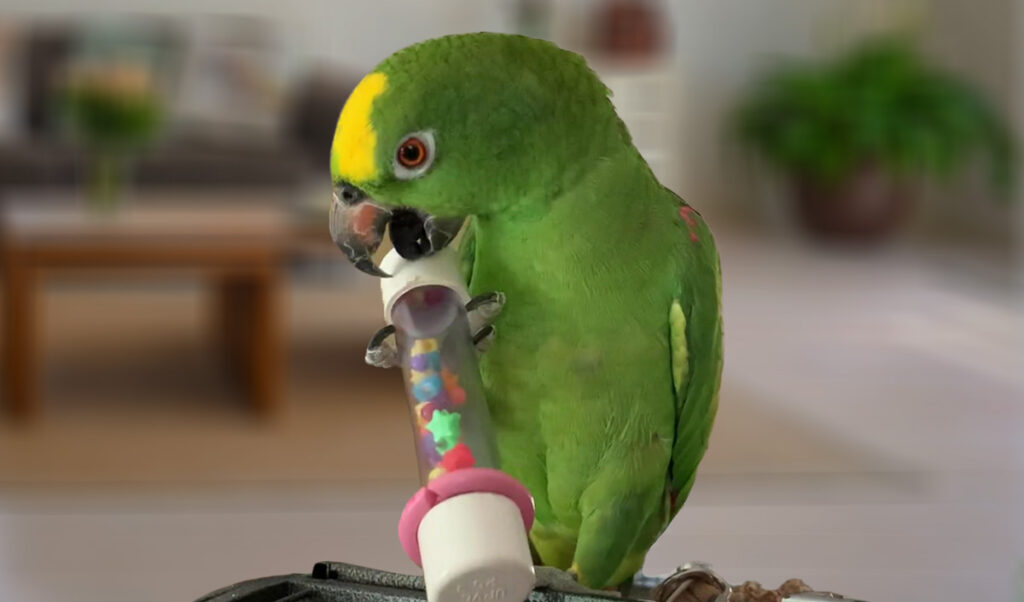
For the Health and Well Being of Your Bird
Creating the Ideal Environment for Parrot Playtime
Playing with foot toys can be challenging for inexperienced or young parrots due to their lack of balance, stability, and dexterity. A flat, stable surface is necessary for successful foot toy play. Consider designating a safe play area on the floor or a stable tabletop with a raised edge to keep the toys from rolling away. A box filled with foot toys can also be placed in the bird’s cage during the day, but away from the perches, food, and water dishes to avoid contamination from droppings.
If you’re traveling with your parrot, foot toys can be a great accessory in the carrier. Upon arrival, the toys can be removed and used on a safe, non-slippery surface.
Mixing Up the Activities
Small preening devices, such as bristled balls or toothbrushes, can be a great addition to your bird’s foot toy collection. They’re easy, inexpensive, and promote preening while also requiring balance and dexterity. Be sure to replace or wash the toys regularly, and avoid brushes with thin bristles that could entangle your bird’s leg or foot. Aside from foot toys, providing your parrot with a variety of toys can help keep them mentally and physically stimulated. Toys that encourage chewing, foraging, and climbing can be great additions to your bird’s play area. Bird-safe household items such as cardboard boxes, paper bags, and straws can also be used as toys.
Creating Social Opportunities
Parrots are social animals and thrive on interaction with their owners. Playing games such as peek-a-boo or hide-and-seek can help strengthen the bond between you and your bird. You can also consider introducing your parrot to other parrots for socialization, but be sure to supervise their interactions to prevent aggression or injury.
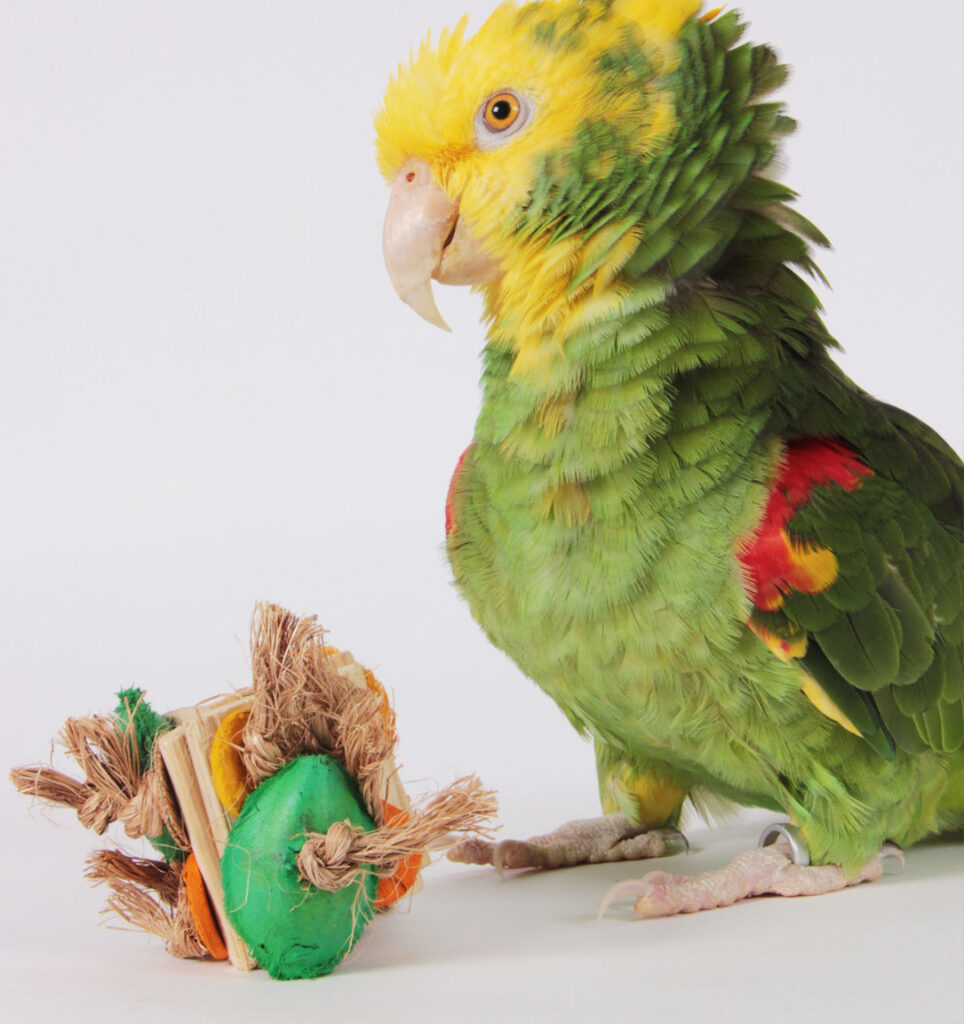
Vigilance is Key
Regularly engaging in activities with your parrot and observing their behavior can help you identify signs of discomfort or distress. Changes in your bird’s playing habits or skills may indicate health concerns. For instance, if your bird once enjoyed playing with foot toys but now lacks the strength, confidence, balance, or interest to do so, it could mean they’re experiencing health issues.
When choosing toys for your parrot, it’s important to ensure their safety. Avoid toys with small or detachable parts that can be swallowed or choked on. Toys made from toxic materials such as lead, zinc, or galvanized metal should also be avoided. Always supervise your parrot during playtime to prevent accidents.
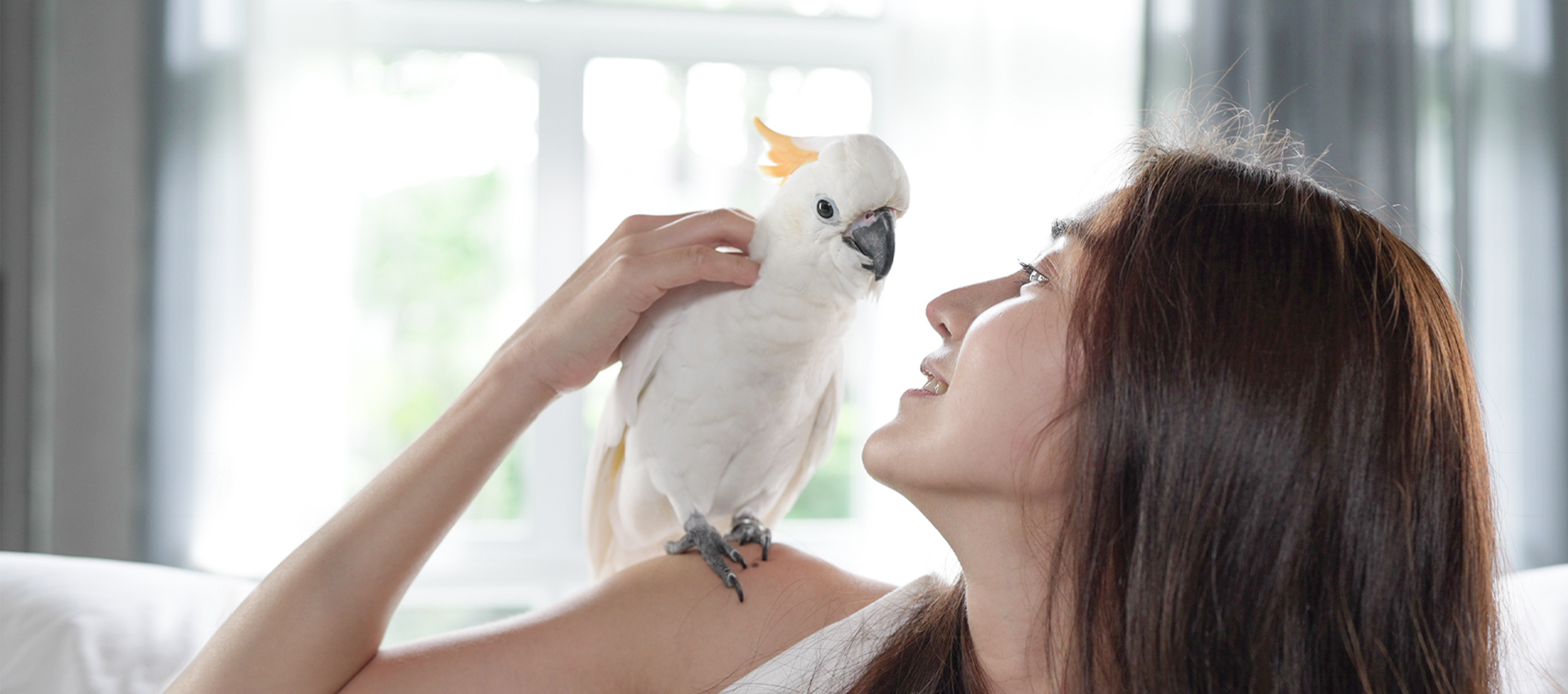
Learn More About Toys
Smart.Play
Exercise Toys
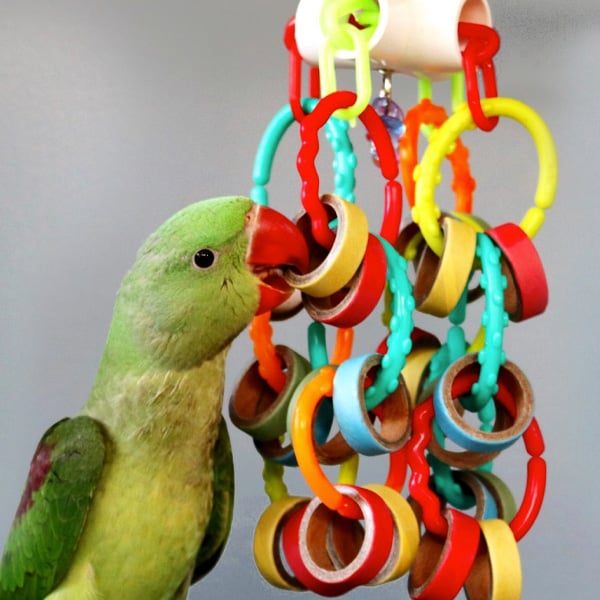
Smart.Play
Preening Toys
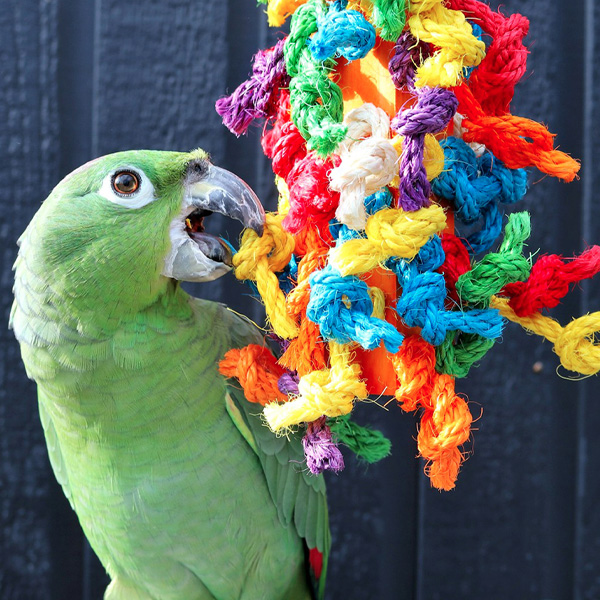
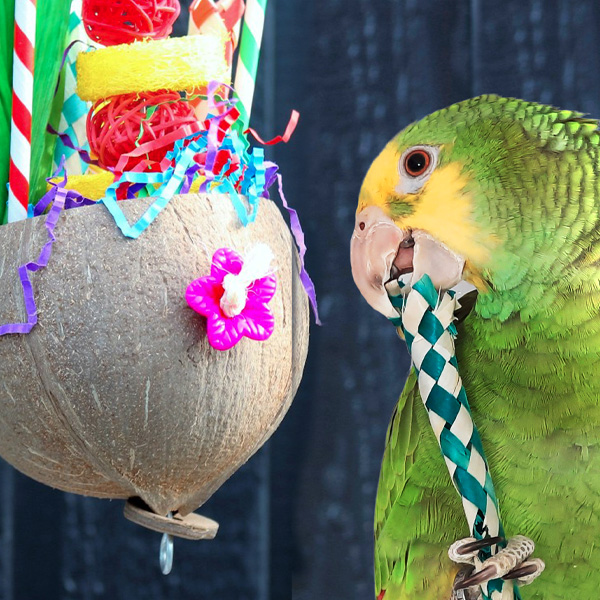
Smart.Play
Foraging Toys

Active.Play
Perches
Related Articles
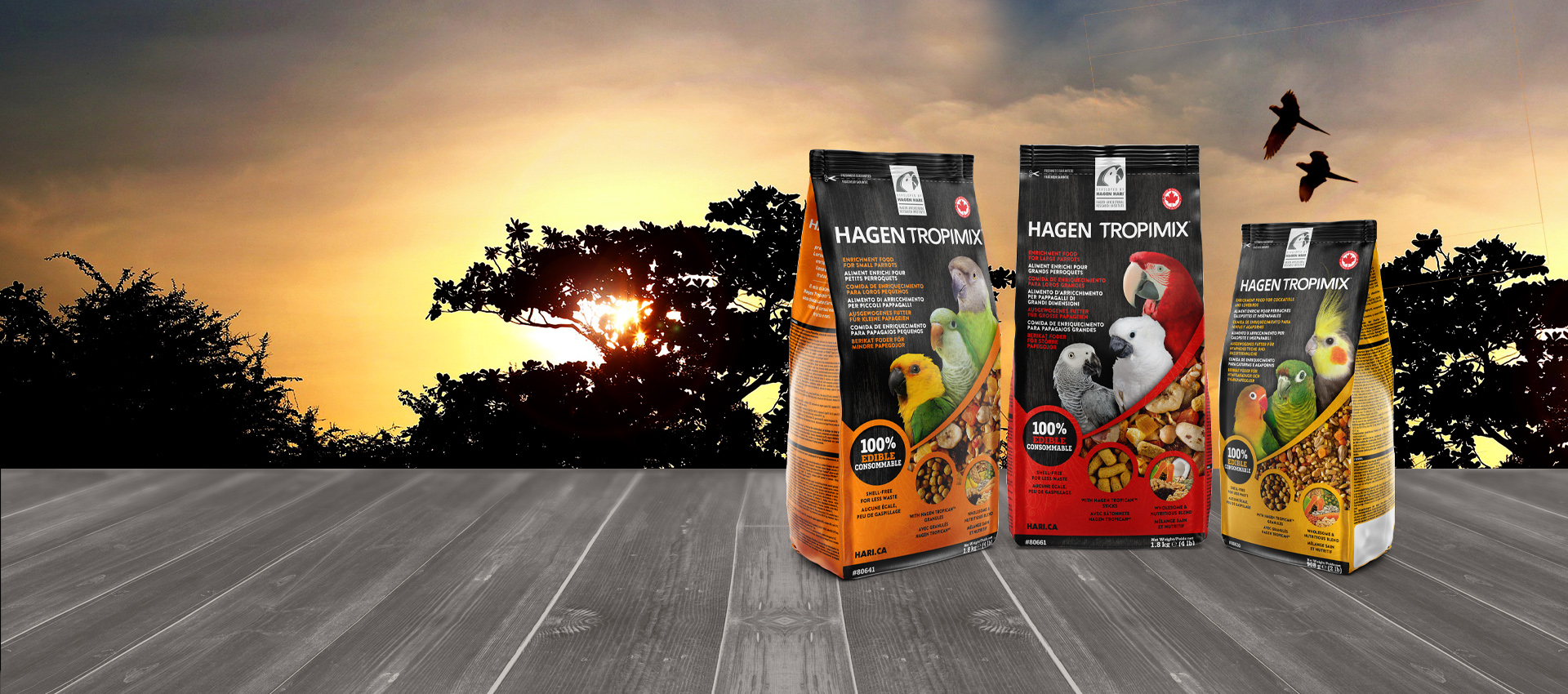
Enrich your companion bird’s quality of life
By including Tropimix into your pet bird’s daily diet, you can ensure balanced nutrition while also promoting foraging behavior and mental stimulation.

